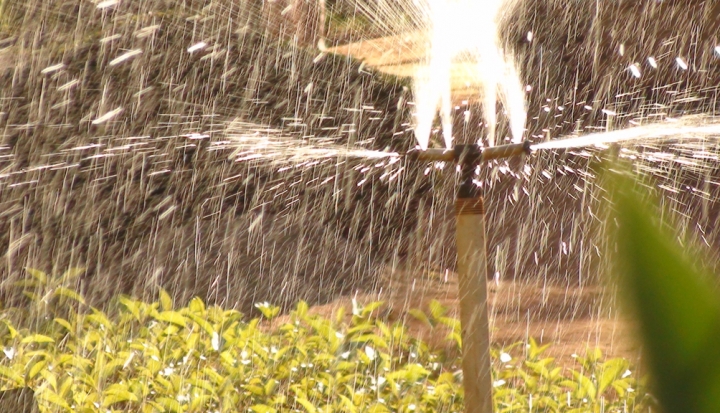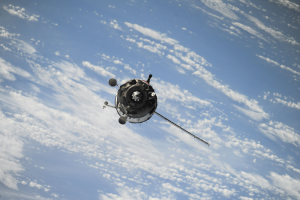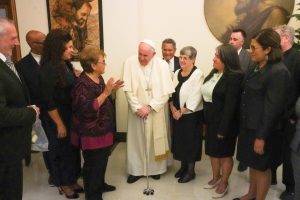I grew up in the arid West: the land of prairie, tumbleweed, and newly-constructed subdivisions. I remember, as a kid, noticing the paradox between public concern about drought—and the fact that seemingly every house had a green, water-guzzling lawn. Later, I studied the intersections of human culture and ecology, especially with regard to fresh water. And now, in the 21st century, global fresh water scarcity is one of the major challenges facing humanity. What can we do about this serious situation?
Fresh water is a global necessity for human beings, ecosystems, communities, and civilizations. In fact, access to fresh water is so crucial to human survival and flourishing that the church has referred to it as a “right-to-life” issue!
Certainly, it is people living in subsistence situations and developing nations who tend to feel the effects of water scarcity first. But fresh water is also polluted and tapped unsustainably in the United States. Urgent realities—drought, aquifer depletion, chemical spills into major waterways—make our invisible water infrastructure quite visible. They also remind us just how dependent we are on clean, fresh water.
Here are eight ways to bring fresh water to the forefront of your thought and practice, as parishes and as individual Catholics.
1. Conduct an upstream audit.
The first step to thinking about global issues like fresh water is to start locally! Where does your water come from, besides the tap? Can you trace its journey through subterranean pipes, treatment plants, and tunnels all the way to its source? Try to find out the history of your region’s water supply. Who else relies on the water in your watershed?
2. Give up the bottle.
In the U.S., bottled water is everywhere. But it doesn’t need to be. Where clean water is available, bottled water is expensive, unnecessary, and environmentally problematic. So once you’ve learned about your water supply, turn to the tap instead. Start by committing to use tap water for parish events and offices. Consider investing in filters and spigots for permanent installation. Then, take the money you’ve saved and put it towards church programming or outreach—for example, Catholic Relief Services and Water for People are at the forefront of ensuring access to fresh water for all people.
3. Hold a global water awareness movie screening and discussion.
Films like Irena Salina’s FLOW argue that access to fresh, clean water is a fundamental human right, and depict challenges to global fresh water access in an era of economic globalization. Shorter, educational, online videos can augment the discussion, such as these resources I created with TED-Ed and History.com. (Each is less than five minutes long: where our water comes from, introduction to fresh water scarcity, and a world without water).
4. Don’t be a drip!
Have you taken a look at the sinks and fixtures in your church building recently? If so, you might have noticed leaky pipes or faucets. If not, now is the time for an infrastructure inventory: Take this opportunity to assess whether pipes and faucets are leaking and, if so, fix them. Paying attention to infrastructure is a good way to meditate on fresh water’s long, essential journey from source to sink.
5. Imagine if it were otherwise.
The facts are staggering: worldwide, nearly 800 million people lack access to clean water and nearly 2.5 billion do not have adequate sanitation. Clean water supply and infrastructure are a privilege: Don’t take it for granted. There are a range of water challenges that can help individuals and institutions to improve water use habits while growing in empathy for our global neighbors.
6. Let the children guide you.
The Food and Agriculture Organization has an informative booklet and Water Challenge kit for children and lifelong learners. Consider whether your CCD or Sunday School programs may incorporate some of these exercises. Families can also explore the water experiments and lessons in this resource. Such practical, liquid lessons are great catalysts for discussion about the importance of water in daily life and faith (see number 8).
7. What’s the water footprint of your parish and home?
Did you know that your cup of coffee actually represents 37 gallons of water? The Water Footprint is a tool that helps us to visualize just how much water is consumed by our daily activities—from the clothes we wear to the food we eat. Consider joining with nearby parishes to assess and compare water use patterns.
8. Ponder and preach the gospel of living water.
The Bible is full of images of water, from Jesus at the Jordan River (in the gospels) to the woman at the well (John 4) and Jesus’ self-description as “living water.” In the Gospel of Matthew, Jesus describes “giving drink to the thirsty” as one of the corporal works of mercy. And water is a central part of Catholic rituals, from baptism to blessings—and a fantastic topic to explore theologically. Therefore, form scripture study groups to delve into the meanings of fresh water in the Bible. Prompt your priest to preach about what the church means when it says that access to fresh water is a “fundamental, right-to-life issue”! Fresh water is an ideal topic to think through how faith shapes our actions in the world.
Sometimes, what is most essential is invisible to us in our daily life. In the U.S., that is frequently the case with fresh water. The eight actions described above can help to make visible our relationships to fresh water.
Whether in your parish, your community, or your home, consider how to deepen your relationship with both theological reality of “living water” and the material reality of fresh water, which supports all life. Indeed, fresh water supply is—and will continue to be—the right-to-life issue par excellence for global humanity. It is worth discerning where you can jump in!
This is a web-exclusive sidebar that accompanies the article “High and dry: Water poverty in the United States” which appeared in the April 2014 issue of U.S. Catholic (Vol. 79, No. 4, pages 32-34).
Image: Flickr photo cc by Tavos Mata Machado













Add comment